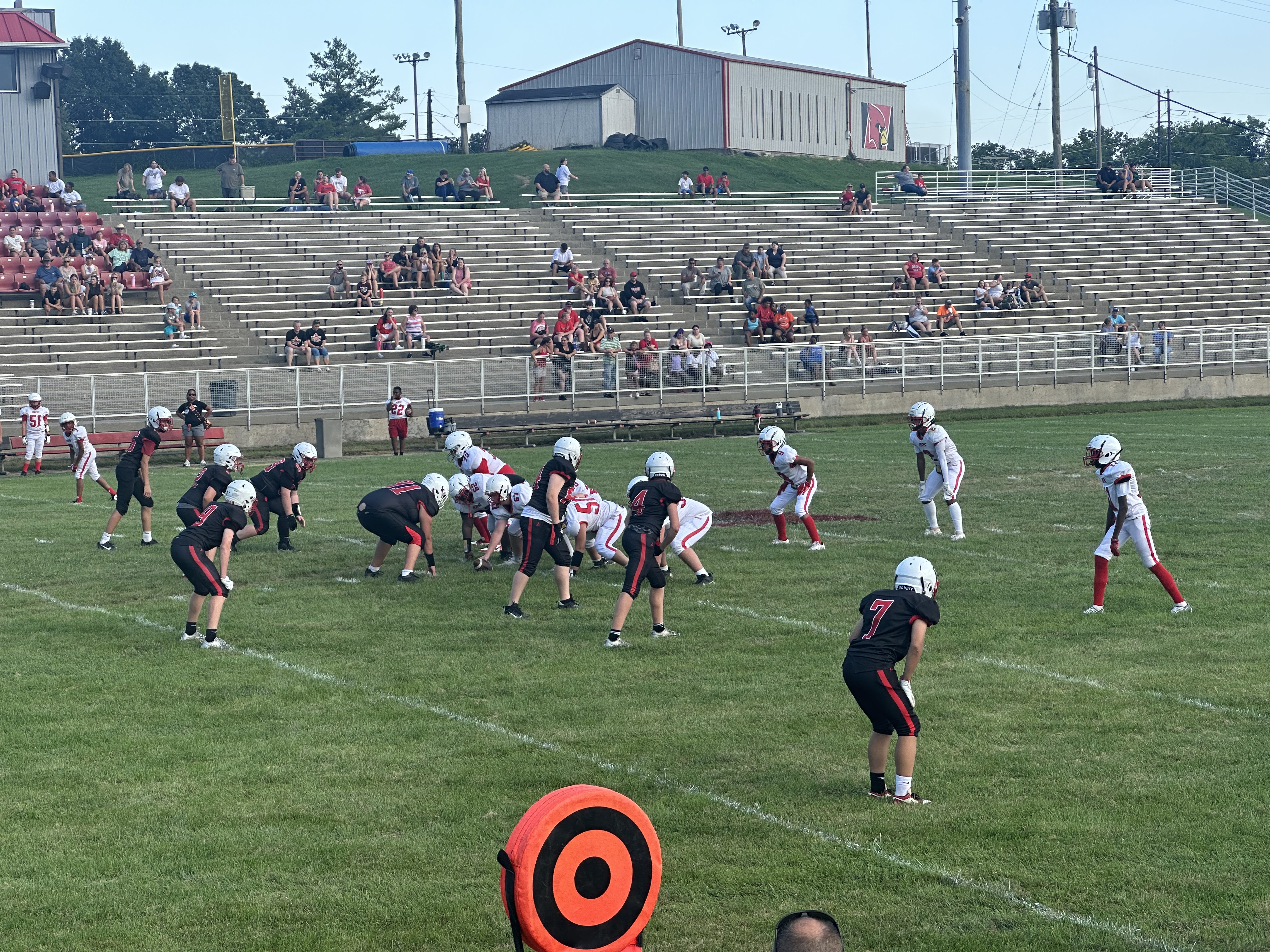Closer Look: Clark overdose death rate rises, Ky. sees overall decline
Published 7:24 pm Saturday, July 20, 2019
Clark County ranked among the Top 5 most resident overdose deaths per capita in the state for 2018, according to a report issued by the Kentucky Office of Drug Control Policy this week.
According to the 2018 Overdose Fatality Report, the most resident overdose deaths by county, age-adjusted per capita, include: Boyd County with 60 overdose deaths; Madison County, 57; Kenton County, 56; Clark County, 51; and Campbell County, 49.
The Kentucky Medical Examiner’s Office, the Kentucky Injury Prevention and Research Center and the Kentucky Office of Vital Statistics compiled data for the report.
Trending
Clark County’s rate in the 2018 report is not only up from the 2017 report, but it is also the highest deaths counted since the KODCP began tracking the overdose fatalities following the passing of House Bill 1 from the 2012 special session.
The previous record in Clark County was 18 deaths counted in 2012; the lowest record was eight deaths in 2014.
Clark County Coroner Robert Gayheart said he has seen a steady increase in overdose deaths in his office since 2017, and 2019 is looking to be no different.
“We’re seeing an increase this year,” he said in an interview Friday. “… I don’t think we’re seeing any signs of a significant decrease.”
A statewide decline
Clark County’s high rate and death count comes at a time when the rest of the state saw its first decline since 2013, Mike Wynn, director of communications for the Kentucky Justice and Public Safety Cabinet, wrote in a news release.
Trending
“For years, the annual number of Kentuckians who died from drug overdoses steadily climbed to a peak of more than 1,400 in 2017, exacting a disastrous toll on families, communities, social services and economic growth,” the report states. “In 2018, the toll was likewise devastating…the Commonwealth also saw signs the overall trend in overdose deaths may be changing direction. For the first time since 2013, overdose deaths among Kentucky residents declined.”
In the 2017 report, Clark County had 17 overdoses, with a drug overdose death rate of 47.2. According to the latest report, Clark County had 19 overdoses, with a drug overdose death rate of 51.16. Deaths noted represent both intentional and unintentional overdoses by illicit or prescription drugs, according to the report.
However, there were 233 fewer drug fatalities in the Commonwealth during 2018 than there were in 2017, according to the report.
The overall number of overdose deaths last fell in 2013 by close to 3 percent. However, the drop in 2018 was by far the largest in at least a decade.
The report indicates lethal overdoses totaled 1,333 in 2018. That is down from an all-time high of 1,566 in 2017.
The decline follows years of steady increases in the death toll, driven mostly by a rise in opioid abuse, heroin and fentanyl.
Clark County, however, was not a contributor to that statewide decline.
In surrounding counties, deaths in 2018 were 121 from Fayette County, five from Estill County, 46 from Madison County, 13 from Montgomery County and seven from Powell County.
Gayheart said he thinks the reason for the state decline is the increase in accessibility to Narcan, or naloxone, which means the survival rate for users who overdose may have increased last year.
“That doesn’t mean we’re seeing a decrease in actual drug use,” he said.
2018’s deadliest drugs
Fentanyl and fentanyl analogues were the most lethal drug in 2018, contributing to 786 overdose deaths.
There was also an increase in deaths attributed to methamphetamine.
The report does not breakdown specific drug overdoses in each county, but the map indicates Clark County’s count of fentanyl overdoses was in the 5-60 range.
In the 2017 report, the map indicates Clark County’s number of fentanyl-involved overdose deaths was in the 5-13 range.
Deaths from other controlled substances such as heroin, alprazolam and gabapentin all declined in 2018.
The map indicates Clark County’s count of heroin overdoses was in the 1-4 range, which is the same as the 2017 report.
Though, Gayheart said he sees many overdose deaths contributed to heroin.
Tackling the epidemic
In Clark County, groups such as Clark County Agency for Substance Abuse Policy, Achieving Recovery Together, the needle exchange program, drug court and more are working to combat the rise in deaths.
On a state level, the report states Kentucky’s overall decline is due, in large part, to several program and policy initiatives underway in Kentucky, including the statewide use of prescription drug monitoring programs, expanded availability of naloxone and substance abuse treatment and the enactment of laws specifically addressing the availability of prescription medications.
The most recent of these laws, House Bill 333, limited opioid prescriptions for acute pain to a three-day supply with certain exceptions. The law also increased penalties for trafficking in heroin, fentanyl and fentanyl analogues, according to the report.
In 2017, the Kentucky Justice and Public Safety Cabinet partnered with Operation UNITE to create the KY Help Call Center, which provides information on treatment options and open slots among treatment providers. Those with a substance use disorder — or their friends or family members — may call 1-833-8KY-HELP (1-833-859-4357) and speak one-on-one to a specialist who will connect them with treatment as quickly as possible.
The Kentucky Injury Prevention and Research Center (KIPRC) at the University of Kentucky College of Public Health, along with state administration, launched FindHelpNowKY.org, a search engine for drug treatment, helping users locate treatment providers.
The Bevin administration also launched the “Don’t Let Them Die” campaign in 2017 to spread information on substance use disorder, the call center, drug treatment and naloxone. The campaign included a website and educational announcements on television and radio, according to the report.
In 2018, Kentucky State Police launched the Angel Initiative. Anyone suffering from a substance use disorder can now visit a KSP post to pair with an officer who will assist with locating an appropriate treatment program.
Meanwhile, the Kentucky Department of Corrections (DOC) is undertaking a comprehensive overhaul of substance abuse programming. The move will expand the system to include every possible treatment modality available, offering additional tools and options for clinicians and inmates. DOC is hiring other treatment clinicians to provide services both inside and outside prison walls and is providing dedicated treatment staff at Probation and Parole offices.
In April, the U.S. Department of Health and Human Services (HHS) awarded more than $87 million for Kentucky CAN HEAL (Communities and Networks Helping End Addiction Long-term) — a partnership between the University of Kentucky’s Center on Drug and Alcohol Research (CDAR), the Cabinet for Health and Family Services and the Justice and Public Safety Cabinet. The project will fund a comprehensive four-year study aimed at reducing opioid overdose deaths by 40 percent in 16 counties that represent more than one-third of Kentucky’s population.
Clark County is among those counties in the project.
Gayheart said he thinks there is more to be done in Clark County, starting with stopping suppliers, pushing recovery efforts and educating the public, especially youth.
“This has been my fight since I’ve been coroner,” he said.
Other highlights
A review of cases autopsied by the Kentucky Medical Examiner’s Office and toxicology reports submitted by coroners indicates that in 2018:
— Residents ages 35 to 44 were the largest demographic in overdose deaths, followed by 25-34.
— Approximately 188 resident overdose deaths involved the use of heroin in 2018, down from 270 percent from 2017.
— Fentanyl and fentanyl analogues account for nearly 61 percent of all deaths, up from 52 percent in 2017, when 763 people died with fentanyl or its analogues in their system.
— Jefferson County had the most resident overdose deaths of any county with 337, down from 426 in the 2017 report.
— The most substantial increase in resident overdose fatalities occurred in Pike County, where deaths increased by five. Other counties with increases include Warren County by four and McCracken by three.
— The most significant decrease occurred in Jefferson County, which had 89 fewer Kentucky resident fatalities in 2018 compared to the previous year. Other counties with considerable declines include Kenton County, which declined by 24, Campbell County, which fell by 14, Nelson by 13 and Jessamine by 12.
— Morphine was in 432 resident cases and Monoacetylmorphine (heroin) in 211.
— Alprazolam was detected in approximately 214 cases, down from 269 in 2017; gabapentin in 255 cases, down from 363 in 2017; methamphetamine in 428 cases, up from 357 in 2017; oxycodone in 110 cases, down from 157.
Gayheart said he could talk for hours about the opioid crisis, as he encounters the worst consequence of addiction, and it’s heartbreaking. The latest overdose death to come through the coroner’s office was as recent as last Friday, July 12.
“Something has to be done.”






